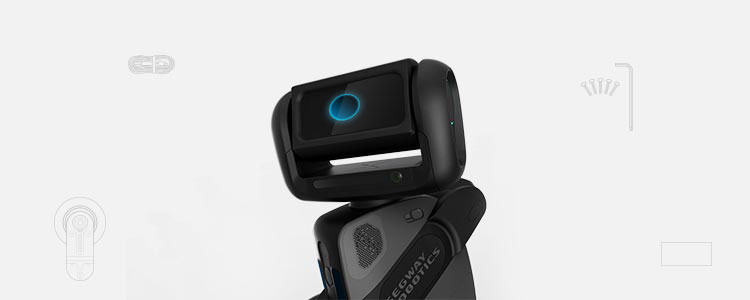Introduction
Loomo Overview
Loomo, previously known as Segway Robot is an open platform for engineers and designers to create the ultimate personal robot by building robot applications and accessories.
By using our Software Development Kit (SDK), developers can control the base assembly and robot head at a proper abstraction level. Users can access the sensor data including aligned RGB-Depth images from Intel's RealSense camera, poses from Inertial Measurement Unit (IMU), as well as built-in perception functions such as mic-array based voice recognition. Through the hardware extension bay in the back, mechanical and electrical engineers can design and attach additional components to the robot; allowing even more flexibility and a wide range of creative possibilities.
-
Mobility
Loomo is based on a self-balancing two-wheeled vehicle, allowing for quick transformation between the scooter and robot. When used for riding, it can reach distances of 30 kilometers with full charge; in robot mode, it can operate continuously for approximately 8-10 hours. A two-degree-of-freedom robot head provides full range of view angles for on-board cameras, and the default-enabled Gimbal mode stabilizes images during robot movements, providing best image quality for vision processing. In the future version, users can choose to turn the self-balancing mechanism on or off, depending on the use cases. In the case of use in the non-self-balancing setting, additional wheels should be added to the platform as hardware extension.
-
Sensors
What distinguishes the Loomo is also its variety of sensors:
-
Intel's RealSense module provides aligned RGB-Depth images at 30fps, which is best for vision related tasks including human detection & tracking, visual Simultaneous Localization and Mapping (SLAM), etc.
-
The main HD camera is mounted next to the robot face, with wide-angle of 104 degrees FOV.
-
A microphone array composed of 5 mics is used to localize voice source and reduce background noises during voice recognition.
-
The touch sensors on the head enable natural user interaction.
-
The Ultrasonic sensor in the front can detect obstacles in real time to prevent collisions.
-
Hall sensors embedded in the wheel motors provides stable odometry data, while the IMUs in the robot body and head are used to measure the robot pose and head orientations.
-
-
Computation
Powered by Intel Atom Z8750 processor, the powerful 4 cores CPU has a maximum of 2.4 GHz frequency, making the robot capable of running compute-intensive perception algorithms.
-
Hardware Extension Bay
The hardware extension bay gives users direct access to a USB 2.0 port and provides 24 volts power supply, which could be used as a power source for attached external devices.
Hardware Specifications

